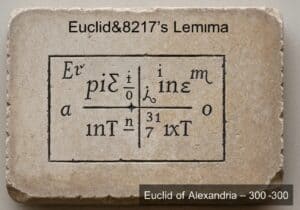A partial differential equation (PDE) is an equation that imposes relations between the various partial derivatives of a multivariable function. The function is often called the unknown, and a PDE describes a relationship between this unknown function and its derivatives. Unlike ordinary differential equations (ODEs), which involve functions of a single variable, PDEs are fundamental to modeling multidimensional systems.
A partial differential equation (PDE) for a function [latex]u(x_1, dots, x_n)[/latex] is an equation of the form [latex]F(x_1, dots, x_n, u, frac{partial u}{partial x_1}, dots, frac{partial u}{partial x_n}, frac{partial^2 u}{partial x_1 partial x_1}, dots) = 0[/latex]. This formulation expresses a relationship between an unknown function [latex]u[/latex] of several independent variables and its partial derivatives. The ‘order’ of the PDE is determined by the highest-order derivative present in the equation. For instance, an equation containing a second derivative but no higher is a second-order PDE.
PDEs are classified based on properties that help determine the nature of their solutions. A key classification is linearity. A PDE is ‘linear’ if it is linear in the unknown function and all its derivatives. For example, [latex]a(x,y)u_{xx} + b(x,y)u_{yy} = f(x,y)[/latex] is linear. If the coefficients depend on [latex]u[/latex] or its derivatives, the equation becomes nonlinear. Nonlinear PDEs are notoriously difficult to solve and often exhibit complex behaviors like shock waves or solitons.
The study of PDEs is a vast branch of mathematics, crucial for modeling phenomena across science and engineering. Finding a ‘solution’ means identifying a function that satisfies the equation, often subject to specific boundary or initial conditions that constrain the problem to a unique physical situation. The development of methods to find and analyze these solutions, both analytically and numerically, has been a central theme in mathematics since the 18th century.

























